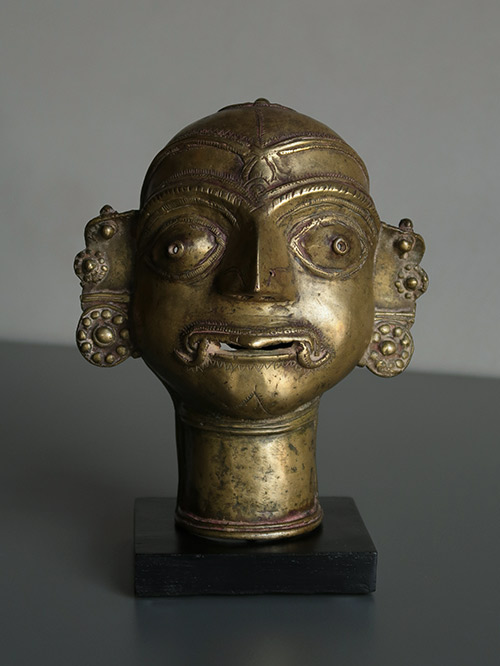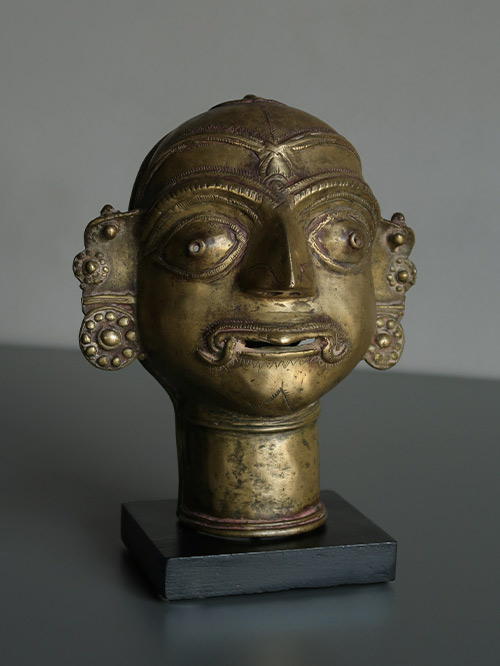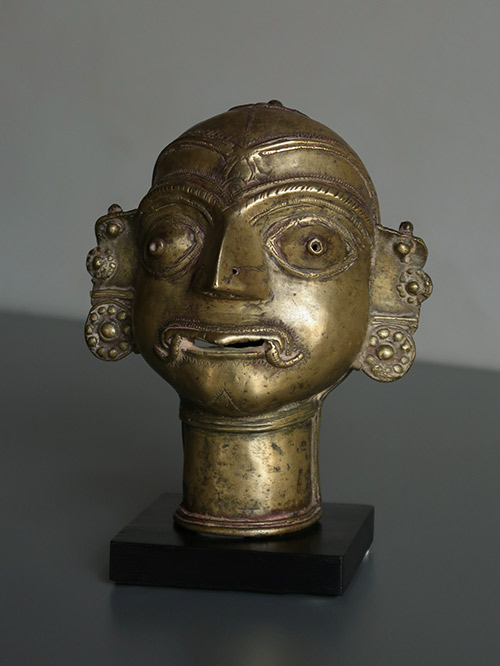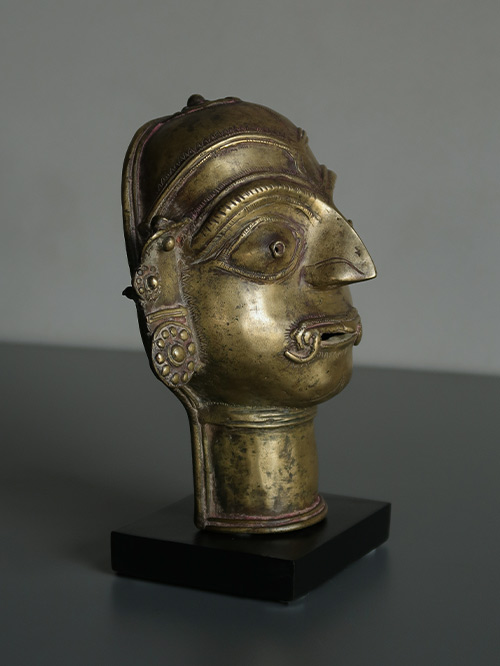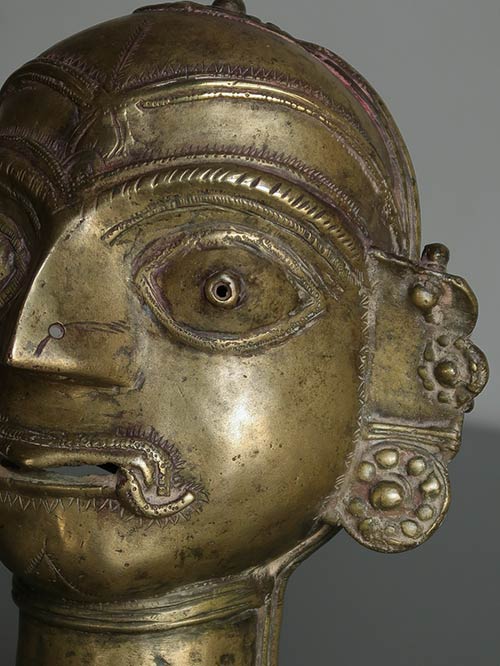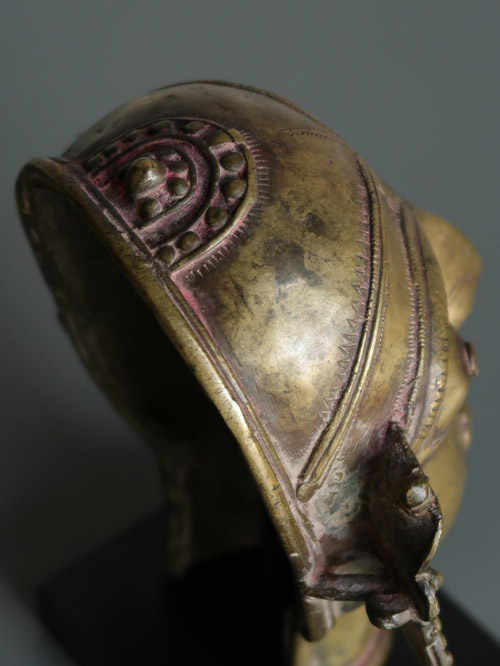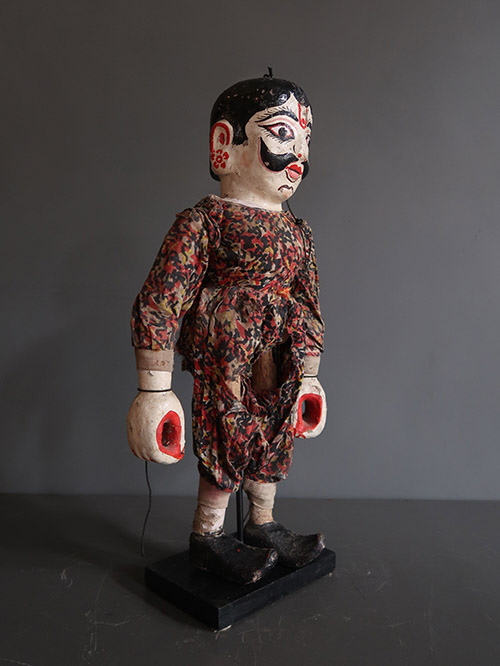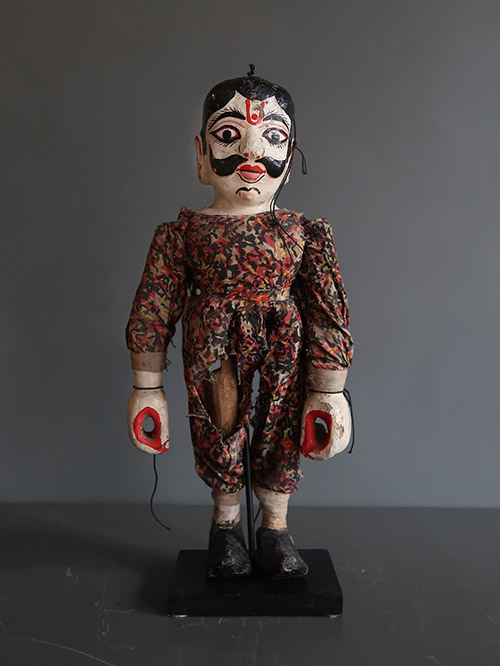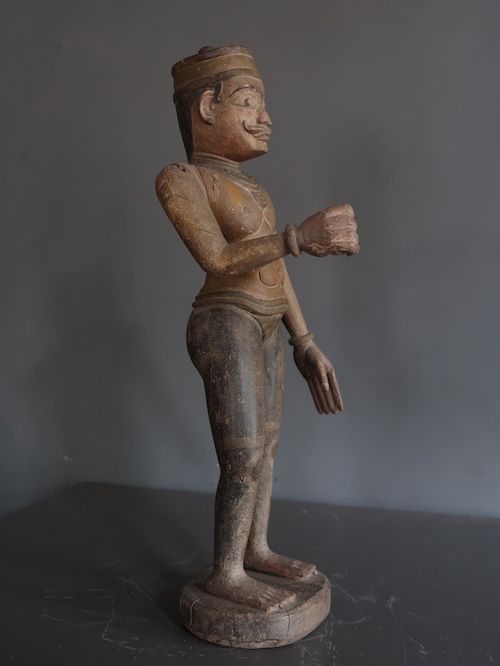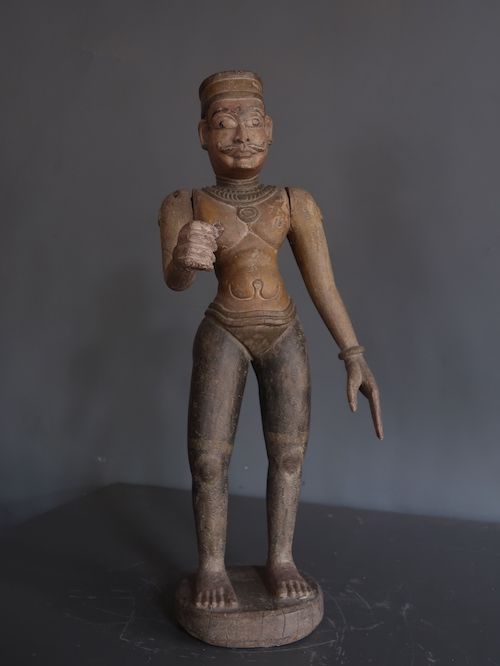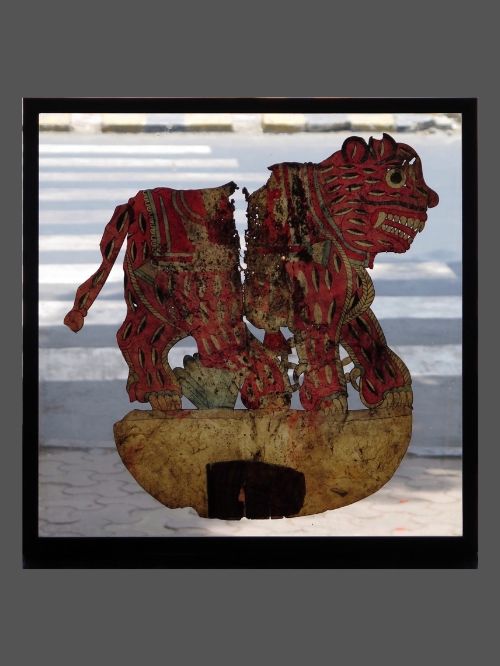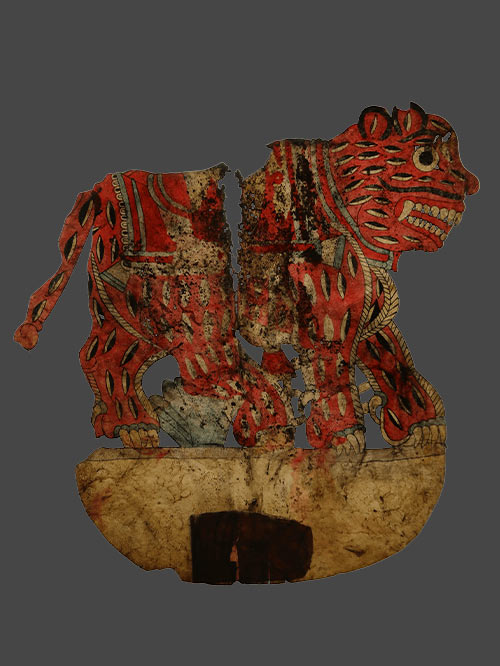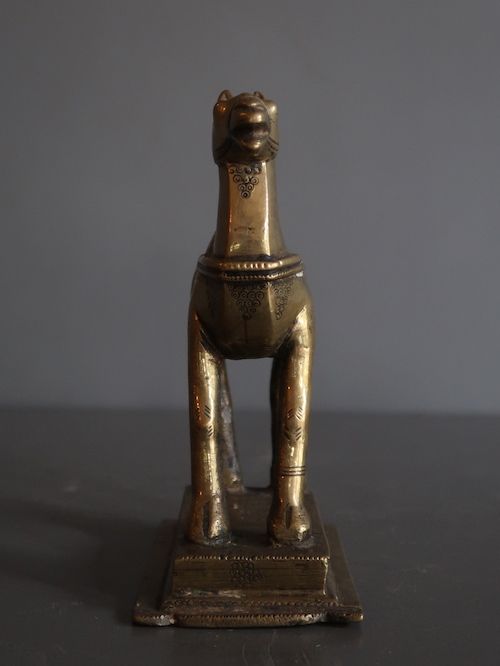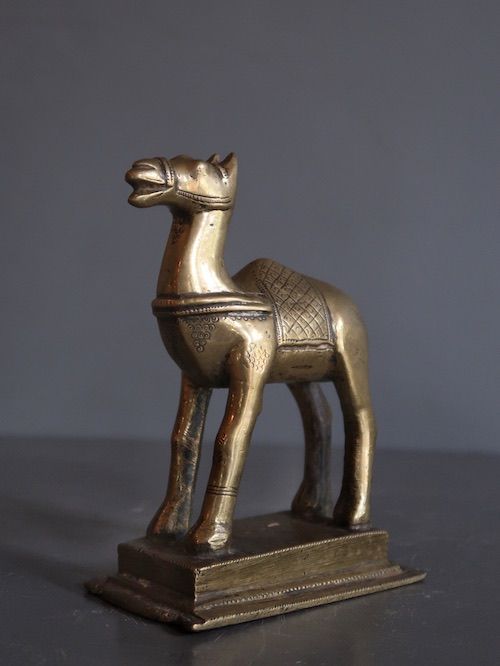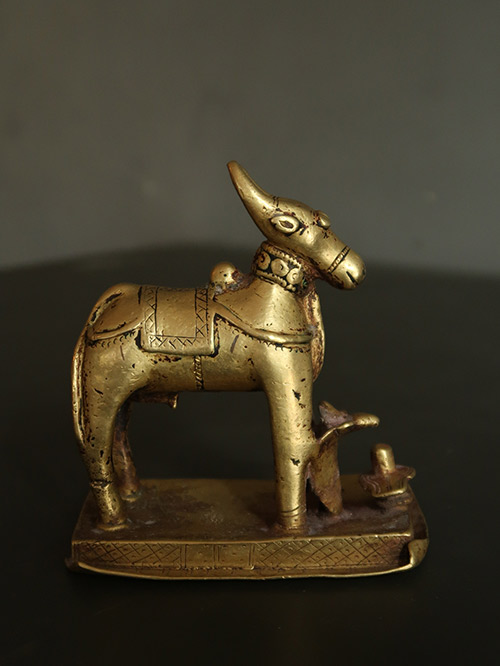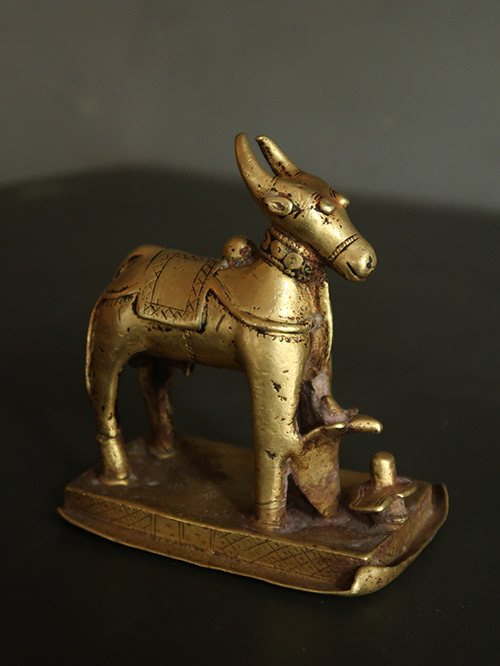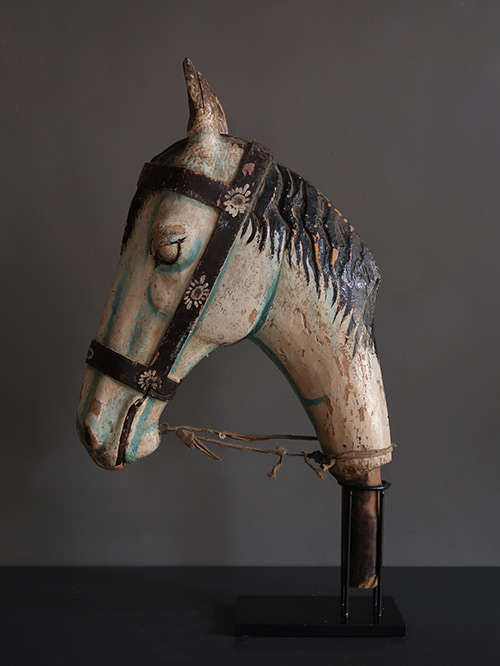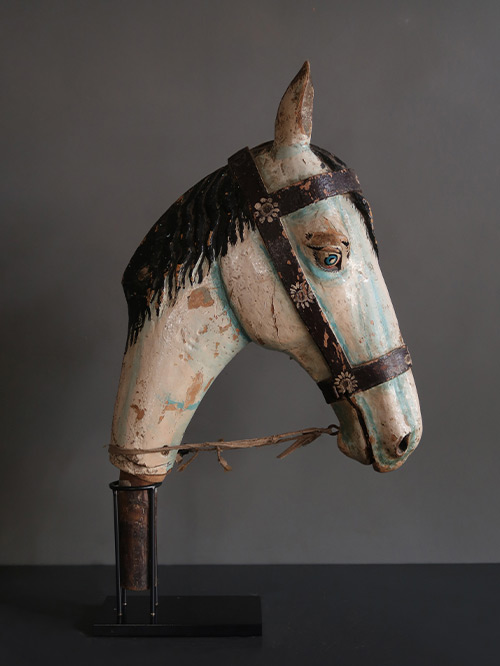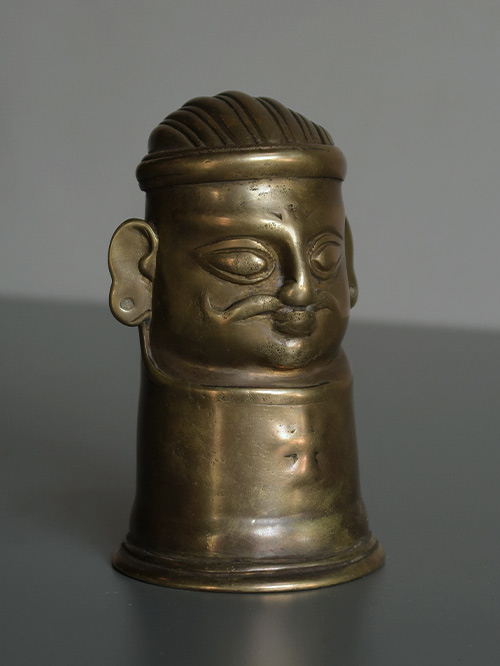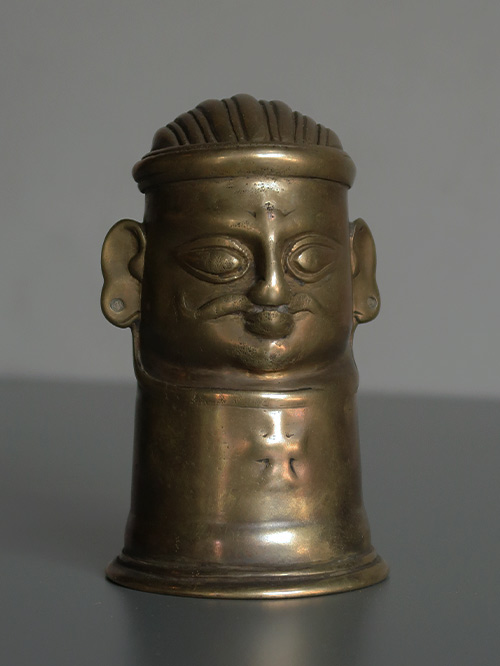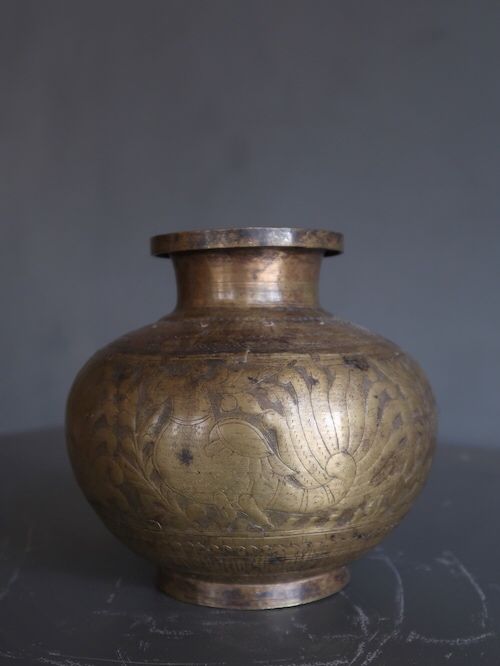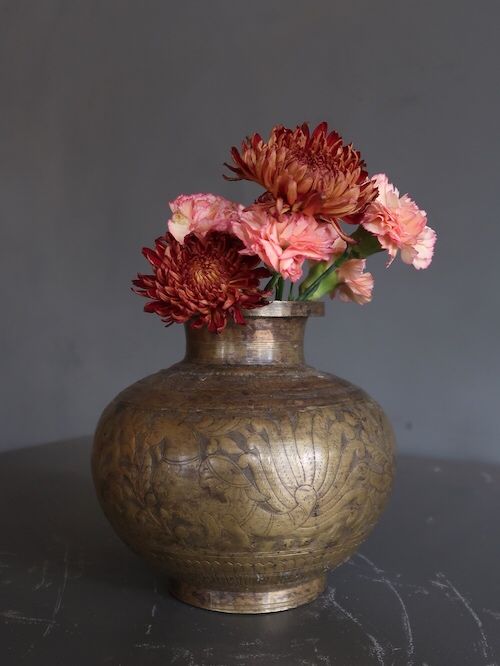Northern Karnataka (South India)
brass
A finely cast small Bhairava head, the ferocious form of Shiva. The head has a rounded tubular extension at its base, which would fit over a pole and could be carried above the heads of the populace during festivals and processions. The fanged visage has bulging eyes and cheeks and with finely cast earrings. A prominent third eye, a symbol of Shiva’s destructive force, is a key identifier.
The use of monster figures and monster masks, usually made of bronze, was also used for this purpose. These mostly depicted a demonic form of Bhairava, one of the avatars of Shiva. They were made with a rounded tubular extension at its base, which would fit over a pole and could be carried above the heads of the populace during festivals and processions. A moustachioed visage was usually portrayed characterised by a vicious face with bulging eyes and cheeks and with a huge gaping mouth with large teeth and fangs. The forehead of the figure often carried the third eye, a symbol of Shiva’s destructive force, and sometimes also include sectarian marks consisting of three horizontally oriented straight or slightly curved lines. Other masks exhibited a distinct animal-like visage with huge teeth and a gigantic mouth. Those were often referred to as ‘tiger masks’. Some masks assumed the expression of a gargoyle with huge, bulging cheeks. Others incorporated composite features including tusks, bossing of the skull and occasionally the horns of a ram.
Protective deities such as viras (deified heroes), kshetrapalas (guardians), bhutas (spirits of various deities), including some daivas (devils) were expected to provide protection against invaders, thieves, the elements- fire , storms, floods, drought, disease etc. Since the earth was populated by gods and their counterparts in the nether world, demons, evil spirits and ghosts, prayers, offerings and sacrifices were made to both groups to propitiate them.
Size (cms): 18.5(H) x 15.5(W) x 9(D)
Size (inches): 7.5(H) x 6(W) x 3.5(D)

